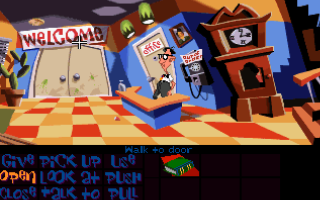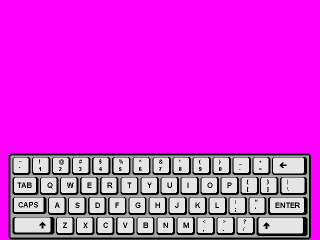Thought it was a good time for a quick update. I’ve made a lot of progress on the keymapper since my last update, with most of the infrastructure in place now. Most of the interface to the rest of the system is implemented (in the Keymapper class). The KeymapManager (where the loading/saving and automatic mapping will be done) still needs work, and will probably be quite tricky! Anyway, here is a summary of my major progress and any design decisions I have made since my last post:
- KeymapManager now uses Domain classes to separate out global and game-specific keymaps – this was inspired by ScummVM’s ConfigManager. Each domain has a default keymap, which incorporates the idea of a “super-global” keymap. Also, this means that a game can provide a specialised version of a global keymap, because keymaps are only requested by name (not domain) and if a keymap of the given name exists in the game-specific domain it is given priority over a global keymap with that name.
- Keymapper has initGame and cleanupGame methods. The idea here is that these methods need to be called before and after a new game is run. In initGame the keymapper looks at the ConfigManager’s active domain (to obtain the gameid). In cleanupGame the keymapper tells the KeymapManager to free up all the game specific keymaps in has loaded. This should provide support for when we have to return to launcher feature.
- Where it comes to actually adding keymaps to the Keymapper we have addGlobalKeyMap(name, map) and addGameKeyMap(name, map). All these methods do is register the new Keymap with the KeymapManager (which is where the loading / automatic mapping of the keymap will occur).
- So the idea is that whenever part of the system needs a specific keymap they will call one of these methods in their initialisation code. Then when they actually want that keymapping to be used they call switchMapping(name).
- The actual mapping of the keys is done (see Keymapper::mapKey). The key point here is that both KEYUP and KEYDOWN events are mapped, and the mapped event is modified to make sure it correlates with the type of event that prompted it.
- The instantiation of the Keymapper and the calling of mapKey has been integrated into the DefaultEventManager.
So I am well on track with my schedule at the moment. For the next few days I will go back to working on the Virtual Keyboard, as there are a couple of features that are still needed.
One last thing…thought I’d better let you know that I’m going to stay with my gran up in Scotland from tomorrow till Monday, which means I probably won’t be online much. But, I’ll be taking my laptop and should be able to work without it.





